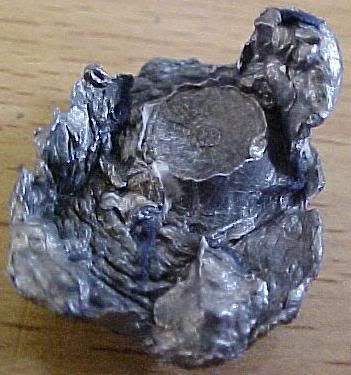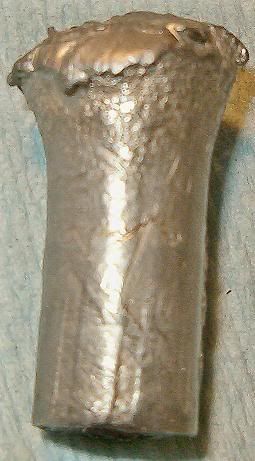We've known for over a hundred years now, if you run a lead bullet to large it does what? It fins and cups the base. Paper patch may hold the fins in but it won't stop the base cupping . Looking at that fuzzy picture of those two bullets it's plenty obvious that the bullets are to large and expanding to hard into the sides of the barrels. The bases look to be rounded, and unless its a terrible optical illusion the groove engraving looks to be narrower at the leading edge of the bullet than at the base? How'ld that happen? As the bullet exited the bore the natural elasticity of the lead trying to do its thing making the "engraving" of the grooves larger as the bullet exited the barrel and distorted.
We also know from history's lessons the only time the folks that made the accuracy legends are made of ,used extra large patched bullets is when they were muzzleloaded and breech seated. The loading of the bullet thru the muzzle allowed the bullet to be engraved and sized to the barrel. (just as we do when we slug a barrel for measurement) Then when the powder kicked it in the butt the bullet was already engraved and sized so distortion was'nt a problem.
We also know that the "match" grade patched bullets were cast or swaged largely of what we consider very hard lead. Usually 14-1 or more , not unusual to find reference to 10-1 alloy for target bullets. Why? The tin keeps the elasticiy of the lead from deforming the bullet. Some folks are prone to call it nose slump these days.

|
   
   
|


|




 Reply With Quote
Reply With Quote



 (Not too bad for expansion!)
(Not too bad for expansion!)











